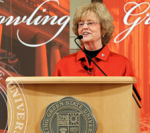Press Release on Parents, Schools, and Physical Activity
Wednesday, April 20th, 2011Press Release: U-M Experts: Gym Gone But Not Forgotten? Parents Want More Physical Activity at School for Kids
This press release begins with a lead telling how many children are overweight, how schools can help, and that recent budget cuts and academic concerns are leading schools to cut back on recess and gym class. The story describes the results of a poll of parents of elementary level students about their views on physical activity in schools. Many parents think there is not enough time or equipment for physical activity in schools.
This press release was well written and effective. The title describes the content well, and it has an effective lead that draws people’s attention. The piece does not follow AP style when using numbers, and is inconsistent – some numerals, some written out. The article only quotes one person, though she is an expert and the director of the poll the article reports on. The article has a section at the end that provides resources for people seeking more information. There is also a description of the institute that the information is from, the poll analyzed in the article, and the results of that poll. This section explains the source of the article content, and establishes the credibility of the information.
Multiple news sources used the press release as a story  used the text verbatim, without correcting the AP style errors. The American Banking and Marketing News website attributed the PR Newswire as where it got the story, while Yahoo News did not reference the PR Newswire but the original writers.
used the text verbatim, without correcting the AP style errors. The American Banking and Marketing News website attributed the PR Newswire as where it got the story, while Yahoo News did not reference the PR Newswire but the original writers.














